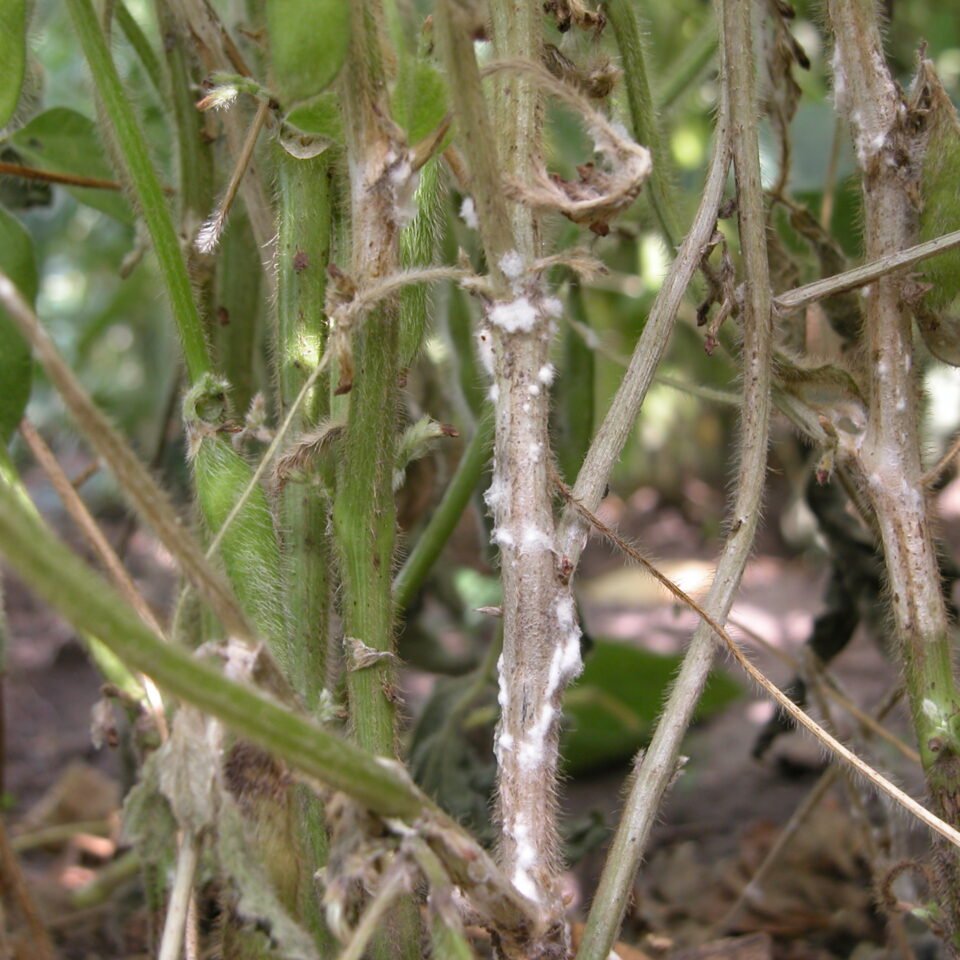
Every year, we see White Mould infections in our soybean and edible bean fields. While generally associated with wetter years, crops can still become infected if moisture is around during flowering from dews or high humidity in the air. Although a proper preventative spray program can dramatically decrease the incidence of this disease, fields can still see White Mould infection if the conditions are right.
With infection present in the field there are some things to consider during and after harvest to help minimize spreading of the disease from field to field and also minimizing the susceptibility for future crops.
Harvest Considerations
- The heaviest pressure fields should always be harvested last; minimizing the spread of the Sclerotia (overwintering structures)
- Clean harvesting equipment at the end of the season or even between high pressure fields
- DO NOT save seed for replanting from fields with high pressure. Not only does infected seed have a lower germination rate, you also run the risk of spreading the disease to other fields you plant the seed in.
- Make records of all highly infected fields to help with rotation considerations
Post-Harvest Considerations
- Bury all crop residues when possible
- Plant a cover crops of non-susceptible specie(s) (generally grass crops, wheat, oats, rye, etc)
- Control weeds that can serve as a host in the coming year both in crop and around the field boundary
- Consider an application of a biological control agent such as Contans WG. This fungus will attack the Sclerotia helping to eliminate sources of infection for future seasons.
Common Weed Hosts for White Mould
| Canada Thistle | Common Chickweed | Lambsquarters |
| Common Burdock | Redroot Pigweed | Curly Dock |
| Common Cocklebur | Dandelion | Sow Thistle |
| Velvetleaf | Purslane | Wild Carrot |
| Common Ragweed | Wild Mustard | Prickly Lettuce |
| Shepard’s Purse | Henbit | Jimsonweed |
Highly Susceptible Crops to White Mould
| Edible Beans | Canola | Cole Crops (Cabbage, Broccoli, etc) |
| Pulse Crops (Peas, Lentils, etc) | Sunflowers | Potatoes |
| Soybeans | Forage Legumes |
Considerations for Following Years
- Plan your rotation to avoid a susceptible crop for the next two to three years in highly infected fields
- When rotating back to a susceptible crop, choose a variety that is rated less susceptible ï‚·
- Often, varieties that have greater resistance to lodging tend to be less susceptible to white mould
- In fields with a history of high white mould incidence, lowering planting population and switching to wider rows can help increase air movement below the canopy to reduce infection
- Plan for an application of a fungicide labelled for white mould suppression in-crop to reduce the level of infection
Featured Image: Crop Protection Network
Additional Sources: OMAFRA, The Ohio State University, Beck’s Hybrids